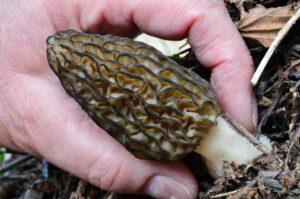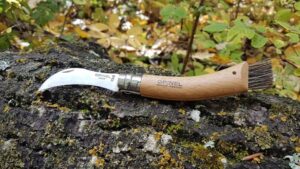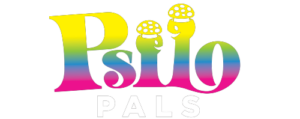Notable Elements
Essential Preparation: Always positively identify mushrooms before consumption and practice sustainable foraging to protect natural habitats.
Foraging in Forests: Look for mushrooms around tree bases and in clearings, being mindful of your surroundings and using GPS for safety.
Meadow and Field Foraging: Forage in pesticide-free areas, utilizing a systematic ground scanning technique, especially in the early morning.
Mountainous Region Foraging: Prepare for variable weather and terrain, focusing on moist areas around streams and varying altitudes.
Coastal and Damp Environment Foraging: Be aware of tidal changes and slippery conditions, looking for mushrooms in mossy and wood-rich areas.
Urban Foraging: Avoid areas with pollution and contaminants, opting for public parks and natural reserves within city boundaries.
Necessary Tools: Use a basket or mesh bag for collection, a small knife for harvesting, and a brush for cleaning mushrooms.
Ethical Foraging Practices: Practice sustainable foraging by only taking what you need and leaving young mushrooms to grow.
Seasonal Awareness: Understand the seasonal patterns of mushrooms in your chosen environment for successful and safe foraging.
Learning from Experts: Join local foraging groups or guided walks for hands-on learning and community engagement.
Introduction
Mushroom foraging, a timeless practice dating back centuries, has seen a resurgence in popularity as a hobby for nature enthusiasts and foodies alike. However, it’s a pursuit that demands respect for nature, knowledge, and above all, safety. The environments in which we forage for mushrooms can be as varied as the mushrooms themselves, each offering unique challenges and rewards. In this comprehensive guide, we will delve into the safe mushroom foraging techniques pertinent to different environments.
Understanding the Basics of Mushroom Foraging
Before embarking on your foraging journey, it’s crucial to understand the fundamental rules that apply universally. First and foremost, never consume a mushroom unless you are 100% certain of its identification. Many mushrooms are poisonous, and mistakes can be fatal. Always carry a field guide or use a reliable app, and when in doubt, leave it out.
Equally important is respecting the environment. Foraging should be sustainable, taking only what you need and leaving the ecosystem as undisturbed as possible. Remember, mushrooms play a vital role in their habitats.

Foraging in Forests
Forests are classic mushroom foraging spots, home to a variety of species. When foraging in forest environments, be aware of the different types of mushrooms growing near specific trees. For example, porcini mushrooms often grow in association with oak trees.
- Safety Tip: Always be mindful of your surroundings in dense forests. Use a GPS or mark your path to avoid getting lost.
- Technique: Look for mushrooms around the bases of trees and in clearings where sunlight penetrates the canopy. Fallen logs and decaying wood are also hotspots for many species.
Foraging in Fields and Meadows
Fields and meadows offer a different foraging experience. Here, you might find puffballs or the prized morels in the spring.
- Safety Tip: Be cautious of pesticide use in agricultural fields. Always forage in areas free from chemical treatments.
- Technique: Scan the ground systematically in a grid pattern to ensure thorough coverage of the area. Early morning is often the best time as dew can highlight the presence of mushrooms.
Foraging in Mountainous Areas
Mountainous regions can be treasure troves for certain mushroom species. However, the terrain can be challenging.
- Safety Tip: Be prepared for sudden weather changes and rugged terrain. Wear appropriate hiking gear and always inform someone about your foraging plan.
- Technique: Focus on areas around streams or moist ground. Elevation can also play a role in the types of mushrooms you find, so be prepared to explore different altitudes.
Coastal and Damp Environments
Coastal areas and regions with high humidity can be excellent for foraging mushrooms like chanterelles.
- Safety Tip: Be aware of tides in coastal areas to avoid getting cut off from the mainland. In damp environments, watch out for slippery surfaces.
- Technique: Look in mossy areas and near decaying wood. The high moisture levels in these environments are ideal for fungi growth.
Urban Foraging
Urban foraging is increasingly popular, but it comes with its unique set of challenges and safety considerations.
- Safety Tip: Be wary of pollution and contaminants. Avoid foraging near busy roads or industrial areas.
- Technique: Seek out public parks and natural reserves within city boundaries, and focus on areas away from pathways and roads.
Tools and Equipment
A successful foraging trip requires the right tools. A basket or mesh bag is ideal for carrying mushrooms, allowing spores to disperse as you walk. A small knife is handy for harvesting, and a brush can be used to clean your finds on the spot.

Ethical Foraging
Ethical foraging is about more than just safety; it’s about sustainability. Take only what you need and leave younger mushrooms to grow and reproduce. Avoid trampling on habitats and be mindful of local regulations and protected species.
Also Read : 10 Deadly Mushrooms You Should Never Eat
The Importance of Seasonal Awareness in Mushroom Foraging
An essential aspect of safe mushroom foraging is understanding the role of seasons. Different mushrooms flourish at different times of the year, and this can vary significantly depending on the environment. In forests, for example, spring and early summer bring morels, while late summer to autumn is ideal for porcini and chanterelles. Familiarizing yourself with the seasonal patterns of mushrooms in your chosen environment not only increases your chances of a successful forage but also ensures you’re looking for the right species at the right time, minimizing the risk of misidentification.
- Seasonal Tip: Always update your knowledge as seasons change. Join local foraging groups or forums to stay informed about what’s currently in season in your area.
Learning From Experienced Foragers
While books and online resources are invaluable, learning from experienced foragers can significantly enhance your understanding and approach to safe mushroom foraging. Consider joining a local foraging group or participating in a guided foraging walk. These experiences offer hands-on learning and the opportunity to ask questions in real-time. Experienced foragers can provide insights that are often overlooked in books, especially regarding local species and their habitats.
- Community Engagement: Actively participate in local foraging communities or online forums. These platforms are not only great for learning but also for sharing your own experiences and findings.
Documenting Your Foraging Journey
Keeping a journal of your foraging adventures is not just a wonderful way to track your progress and experiences; it also serves as a valuable tool for learning and safety. Note the locations where you find specific mushrooms, the environmental conditions, and any identifying features. Over time, this journal will become a personalized guide, helping you to make more informed decisions on future forages.
- Journaling Tip: Include photographs of mushrooms in their natural environment in your journal. This visual record can help with future identifications and also serves to preserve memories of your foraging journeys.
Embracing the Learning Curve
Mushroom foraging is as much about the journey as it is about the destination. It’s important to embrace the learning process and not get discouraged by mistakes or unsuccessful trips. Each foraging excursion is an opportunity to learn something new, whether it’s about mushroom species, environments, or personal safety techniques. Patience and perseverance are key.
- Patience in Practice: Don’t rush the learning process. Take the time to thoroughly research and understand each mushroom you come across, even if it means coming home empty-handed sometimes.
The Role of Technology in Safe Foraging
In today’s digital age, technology can be a valuable ally in safe mushroom foraging. Various apps are available that help with identification, mapping foraging spots, and even connecting with fellow foragers. While technology should never replace traditional knowledge and caution, it can certainly enhance the foraging experience.
- Tech Tip: Utilize apps responsibly. Always cross-reference with multiple sources and never rely solely on technology for mushroom identification.
Concluding Thoughts
Safe mushroom foraging is a skill that balances knowledge, respect for nature, and an understanding of one’s environment. By being well-prepared, seasonally aware, and open to learning, foragers can safely enjoy the multitude of benefits that come with this ancient practice. Whether you’re a seasoned forager or a curious beginner, the world of mushroom foraging is rich with discoveries, just waiting to be explored with care and reverence.

Hi! I’m Jacob Hawthorne, a passionate medical student dedicated to exploring the fascinating world of psychedelics, particularly magic mushrooms (commonly known as shrooms). With a deep interest in their therapeutic potential and profound effects on the human mind, I aim to provide accurate and evidence-based information about shrooms in the Canadian context.

